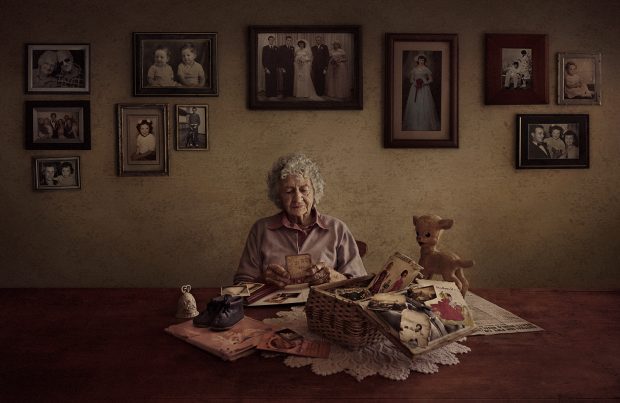Photography competitions put your images in front of a group of highly skilled photography experts — and offer more than just the possibility for an award. But how do you submit images that stand out among thousands of other excellent photographs?
Newborn and portrait photographer Kelly Brownhas won 18 industry awards across the span of just six years — but when just starting out, she had no idea how to navigate the world of photography contests. Now, she’s sharing her photography competition tips to help others find success — and feedback — in the contests.

Feedback is more valuable than an award.
Most photographers enter a photography contest to win — but Kelly says that the feedback from judges is much more valuable than the award itself. The judging panel is creating a set of standards that determines what’s a professional image and what goes above and beyond the usual professional caliber.
Even if your photograph receives a low score, the feedback that comes along with that less-than-stellar outcome will help you improve your work, giving you the tools to know where to focus your efforts. While an award has value, finding areas to improve your work is even more valuable.

Understand the guidelines and what the competition is looking for.
In her first image competition she tried, Kelly admits she didn’t even understand what, exactly, the competition was looking for. Each photography contest is different. Some focus on a specific genre, others a certain technical aspect and some hone in on a specific theme that changes from year to year. The first step to entering a photography competition is to understand what that specific contest is looking for.
An image can be great but fail at an image contest simply because it’s not what the judges are looking for. The winning images in any given contest are both great — and perfectly suited for the contest theme or focus.

Capture the life stories of your subjects. Join internationally renowned photographer, Kelly Brown for a distinctive exploration on how she captures her subject’s individual story. Learn More.

Nail the technical aspects like lighting and color balance.
A bit of inappropriate blur or overexposure is the fastest way out of the running for a top prize in a photography contest. The technical aspects should be spot on. Factors like a proper exposure, sharpness, color balance and lighting are essential to winning a photography contest. Creativity is important, but often the winning images are both creative and technically correct.
The exception? Intentionally breaking a “rule” to make a statement — and even then photographers taking this approach should be cautious. For example, look at this image that won a category in the WPPI print competition, using blur to obscure the couple’s identity and make the image look like a painting.

In the same way, make sure any editing is perfect too. An imperfect healing brush or clone job will be quickly recognized by judges. Get that image as close to perfect as possible in editing, while following the contest guidelines (some have strict restrictions on edits, so be careful of that).

Creativity and style is key.
In any given competition, judges sift through thousands of technically correct images — creativity and style start to push images towards the top of that pile. Getting creative with composition is one way to set an image apart. Getting creative with color and tones is another. Adding elements that helps a single image tell a story gives an image loads of creative energy, something many of Kelly’s award winning images use.
Importantly, the creativity should suite the genre. The image should still fit into the category the judges are looking for.

In print competitions, the paper and viewing conditions matter too.
Images are usually submitted to photography competitions in two ways: digitally, or in print. If you enter a print competition, there’s even more to consider. Paper choice can play a subtle role on the final quality. For example, Kelly suggests that a highly textured paper won’t work as well in a newborn photography contest because the texture won’t quite work well with soft baby skin. An off-white paper will look warmer than an image printed on a pure white paper, while paper with more texture can help an image to look sharper.
Before entering a print competition, Kelly suggests printing a smaller size on a handful of different papers. Then, view them in a softbox or across from a window to simulate the lighting conditions that the judges will be viewing the images in. Different paper types can even obscure some of the finer details that give an image that big impact.

Impact is essential.
The images that win top prizes in photography competitions are the ones that make the judges get out of their chair. Judges look at hundreds of images at a time — an image with impact gets the judges to look closely at the details even after seeing hour after hour of new images. When a judge gets out of their chair, they see those smaller details that push the image above the rest.
Creating an image with impact often involves several elements working together — creativity, story, lighting, composition and more. Often, these images are often stand-out, unique images, not the shots that simply follow the trends, but the photographs that make new trends.
Yes, winning a photography competition is about creativity and impact — but its also about understanding the contest and the judging process. In her class, Capturing Story in Portrait Photography, Kelly shares tips for both capturing those creative portraits and insider insight on finding success in photography competitions.
Capture the life stories of your subjects. Join internationally renowned photographer, Kelly Brown for a distinctive exploration on how she captures her subject’s individual story. Learn More.



